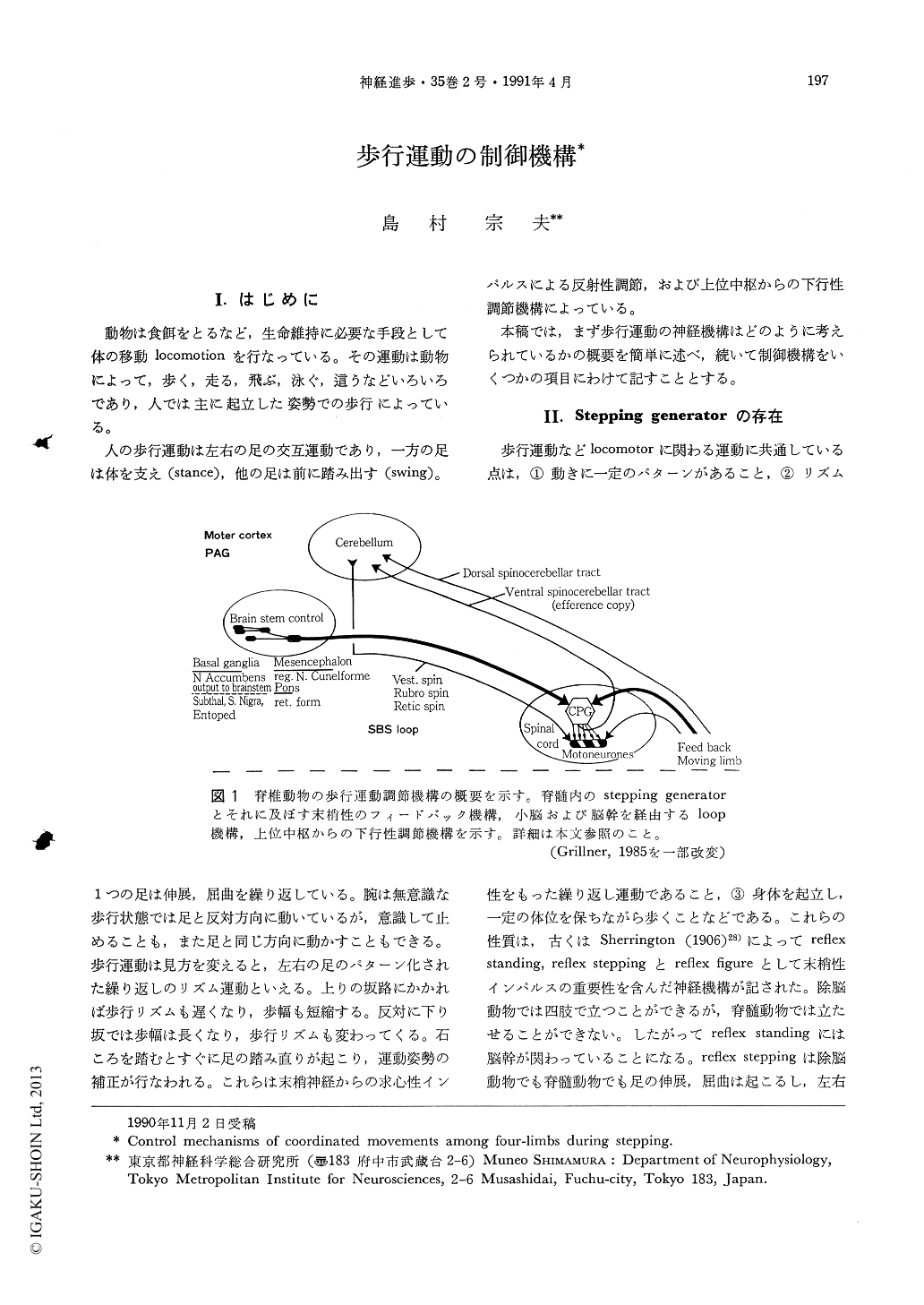Japanese
English
- 有料閲覧
- Abstract 文献概要
- 1ページ目 Look Inside
I.はじめに
動物は食餌をとるなど,生命維持に必要な手段として体の移動locomotionを行なっている。その運動は動物によって,歩く,走る,飛ぶ,泳ぐ,這うなどいろいろであり,人では主に起立した姿勢での歩行によっている。
人の歩行運動は左右の足の交互運動であり,一方の足は体を支え(stance),他の足は前に踏み出す(swing)。1つの足は伸展,屈曲を繰り返している。腕は無意識な歩行状態では足と反対方向に動いているが,意識して止めることも,また足と同じ方向に動かすこともできる。歩行運動は見方を変えると,左右の足のパターン化された繰り返しのリズム運動といえる。上りの坂路にかかれば歩行リズムも遅くなり,歩幅も短縮する。反対に下り坂では歩幅は長くなり,歩行リズムも変わってくる。石ころを踏むとすぐに足の踏み直りが起こり,運動姿勢の補正が行なわれる。これらは末梢神経からの求心性インパルスによる反射性調節,および上位中枢からの下行性調節機構によっている。
During walking in human locomotion, the body is supported by one leg while the other lifts and moves in a forward direction, reaches the ground and the body is then supported by that leg. These movements involve flexion and extension of the leg, bilateral legs move alternatingly either in a stance or swing. Arms also move in alternating forward and backward directions involuntary, in coactiva-tion with the diagonal leg. Movements of the arm can be stopped and also can be moved with the homolateral leg volitionally.

Copyright © 1991, Igaku-Shoin Ltd. All rights reserved.


